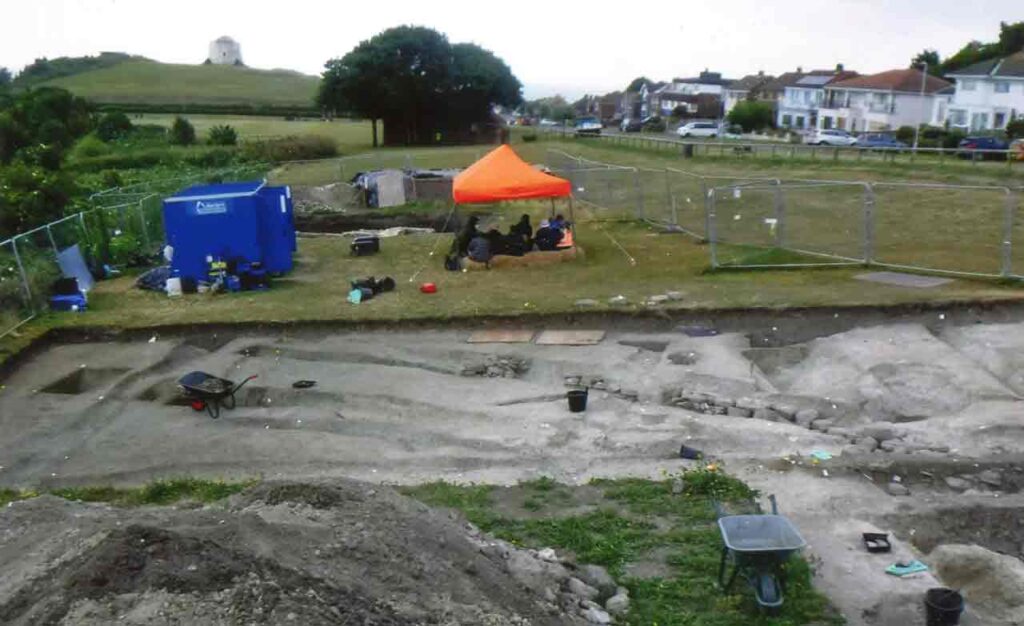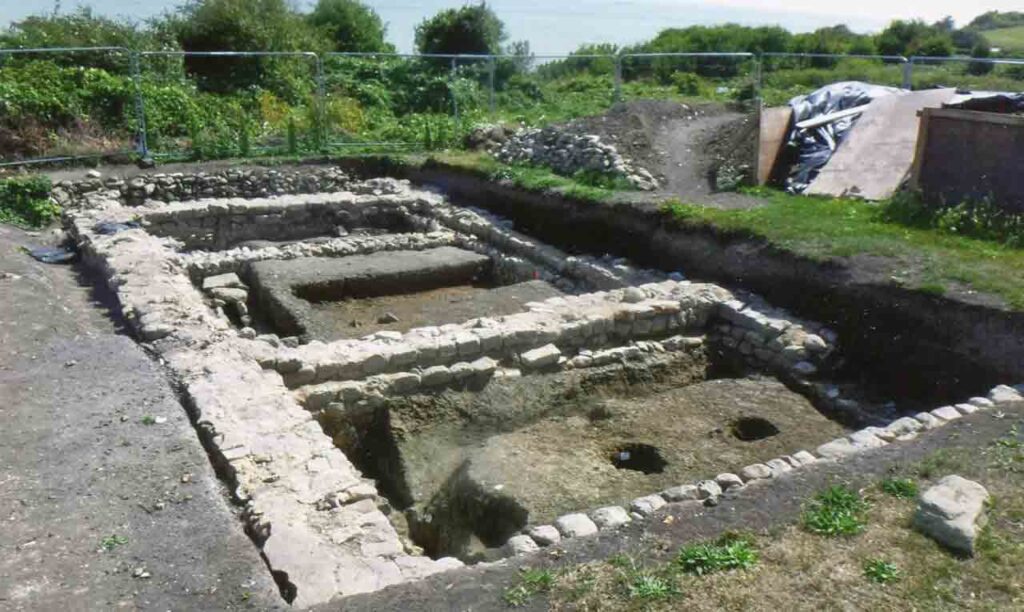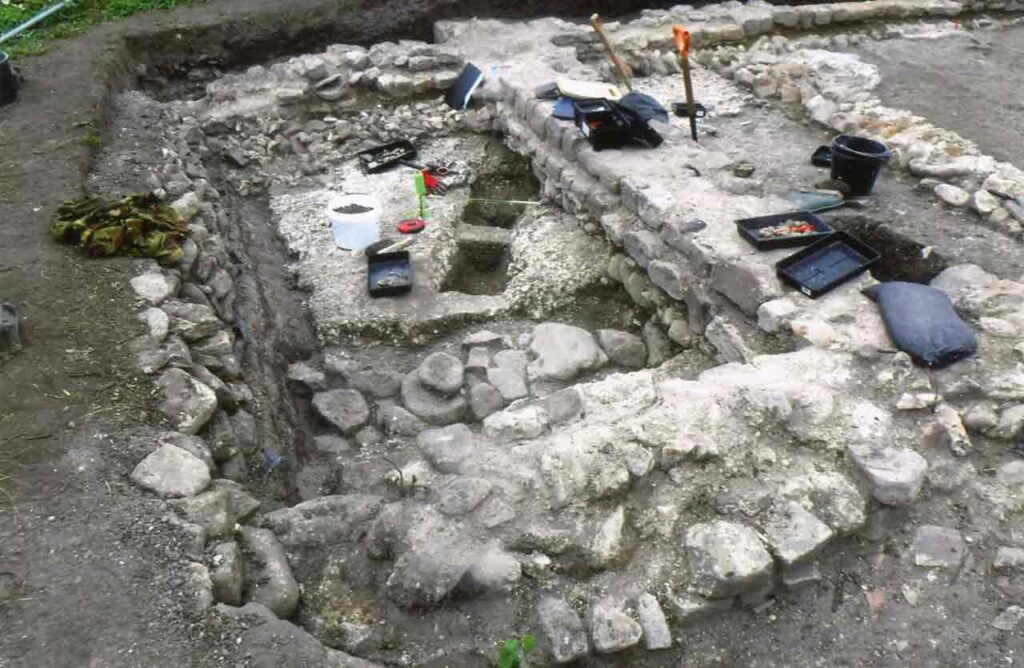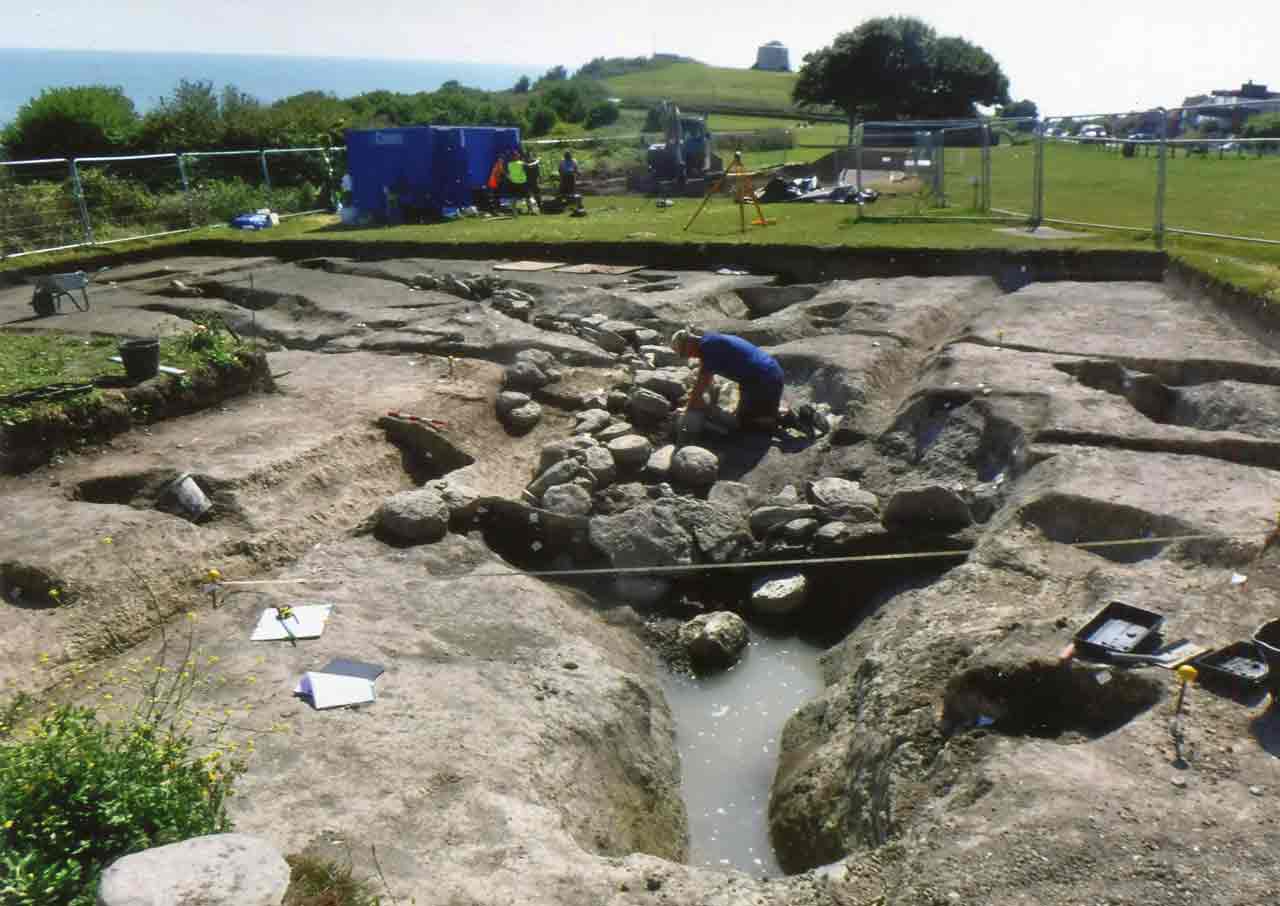The Late Iron Age pit with attendant drain behind plus many ditches Photo: Ray Duff
This year marks the centenary of the Roman Villas site at East Wear Bay, discovered in 1924 by amateur archaeologist Samuel Winbolt, his daughter, and local workmen.
The site was suspected to have Roman presence when curator A.M. Browne-Anderson found pottery and dug a small trench a few years earlier. Winbolt later uncovered the walls and recorded some finds, though much was lost. The cliff edge has since eroded significantly.
The site became a tourist attraction until World War II, after which it was backfilled to preserve it. A 1998/99 excavation using modern techniques recorded more details, though much has since eroded.

View over east side of trench with late Iron Age, early Roman & maybe prehistoric ditches Photo: Ray Duff
Late Iron Age and Early Roman Site
This year, a large ‘L’-shaped trench revealed numerous ditches and pits from the late Iron Age and early Roman periods. A main pit, partially uncovered in 2023, contained broken quern stones, greensand slabs, animal bones, and backfill earth. Further excavation in 2024 revealed more of these finds and a long curving drain feature, suggesting a pond with an attached drain.

View of multiple cross-crossing ditches and some pits Photo: Ray Duff
The trench also contained another deep pit, several ditches from around 50 BC, and early Roman field system ditches from the mid to late first century AD. Most pits and ditches contained domesticated animal bones, broken pottery, a dog skull, seafood shells, and other items. Soil samples were taken for dating.
Roman Villas Section
This year, a new section behind the North East wing, previously excavated in 2010, was opened. The villas were built in two stages: the first around AD 90-100 using local flint, and the second around AD 180-200 using greensand, ironstone, and tufa from Dover, with roof tiles from Dover and Fairlight. They were abandoned in the 3rd century for unknown reasons, and there are no records of their inhabitants, though the later villa was high-status, evidenced by mosaic floors and wall plaster.

The Roman Villas section uncovered with post holes and ditch at right Photo: Ray Duff
This year’s finds included pre-Roman chalk surfaces and a large drain feature. Excavations into the Iron Age levels beneath revealed more pottery, animal bones, and two large post holes in room 49. The walls and finds were thoroughly examined and geo-positioned.
The main discovery was a late ditch feature in room 48 and several post holes, possibly indicating attempts to support the roof. Dating these finds will provide more insights. The site has been backfilled due to its proximity to the cliff edge.

Early view of Room 50 in the villas with chalk floor & roman drain Photo: Ray Duff
Autumn Exhibition
The Canterbury Archaeology Trust will hold a post-excavation centenary exhibition at Gallery 66 in Folkestone’s Old High Street from September 26 to October 8. It will also be part of the Salt + Earth Festival by Creative Folkestone (October 4-6).

Work in Room 49 of Villas excavating post holes in the Iron Age area under Photo: Ray Duff
More info:-
- Canterbury Archaeology Trust: https://www.facebook.com/CanterburyArchaeologicalTrust/
- CAT -Mosaic Room – Folkestone: https://www.canterburytrust.co.uk/post/roman-mosaic-at-folkestone-kent
- Folkestone Research and Archaeology Group: https://www.facebook.com/FolkestoneResearchAndArchaeologyGroup
- Samuel Winbolt; https://en.wikipedia.org/wiki/S._E._Winbolt
- Folkestone Museum:(Roman): https://learn.folkestonemuseum.co.uk/questions/roman-folkestone/
- Folkestone Roman Villa -Wiki- https://en.wikipedia.org/wiki/Folkestone_Roman_Villa
- Salt + Earth Festival 2024: https://www.creativefolkestone.org.uk/festivals-and-projects/salt-earth-environment-festival/
